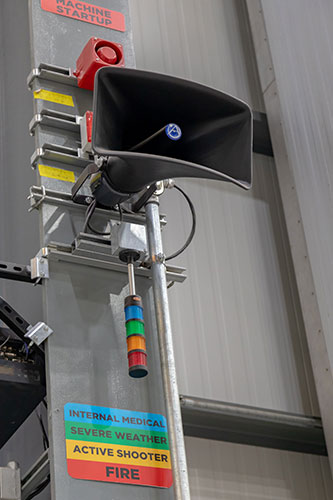Gear up your manufacturing operation to weather spring storms safely.
By Brett Hoopingarner
Spring in recent years has brought an uptick in destructive storms. Those storms—with stronger winds, hail, and more frequent tornadoes—contributed to a record number of billion-dollar disasters in 2023.
We saw flash floods in California turn streets into rivers, tornadoes in Northwest Ohio—an area previously spared—destroy a customer’s business, and hailstorms pummel roofs in Maine. Those 40 mph spring winds in Kansas? They now clock in around 70 mph.
The impact on manufacturers can be devastating. Beyond the immediate damage to property, these events can lead to costly production stoppages, employee injuries, and even long-term business disruption. Add in the risk of inflation, and it now costs more to insure your property due to higher repair and replacement costs.
The good news? By taking proactive steps, you can improve your manufacturing operation’s resilience to spring’s fury and help manage your total cost of risk.
The rise in severe convective storms (SCS)—the kind that pack heavy rain, powerful winds, hail, and lightning—presents a significant threat. Storms like these led to a record 28 events that exceeded $1 billion in losses in the U.S. last year.
These storms can cause flash flooding, damage roofs, siding, and equipment, disrupt power grids, and lead to production delays and lost revenue.
How do you weather the storm—literally and figuratively? The key lies in proactive risk management. Here are steps you can take to safeguard your manufacturing operation:

Your employees are your most valuable asset. Prioritize their safety:
Ongoing dialogue with your insurance provider is crucial. The time to ensure you have sufficient insurance coverages—for your property and equipment—is prior to severe weather.
Guard against inflation: The cost to repair or rebuild your facility if it sustains major damage could exceed its market value. Instead, focus on replacement value. Review coverage limits on your building, inventory, and equipment with your insurer at least annually to avoid large out-of-pocket expenses.
Protect your business’s future with business interruption insurance: This is like having disability insurance for your business. It helps you recover lost profit and cover ongoing expenses while your production line is down. Nowadays, many businesses take out coverage for 12 months or longer due to longer repair and replacement times for buildings and equipment.
Utility service interruption—an extra protection you can add to your policy—can help you recoup lost revenue from downtime sustained by an outage.
Other common coverages include contingent business income should a vendor or supplier of yours sustain damage that impacts your business. You can also schedule coverage for a customer’s property, such as their dies and molds while on-site at your facility.
This is your roadmap to a swift and successful recovery after a severe weather event. Here’s how to build yours:
These are tips to get you started. As always, talk with your insurer and other experts to build a preparedness plan specific to your business.
Nobody wants to believe a severe storm will impact them, but we see it happen often. With proper planning and prevention, you can build resilience into your operation, lessen potential impacts, and respond quickly to spring severe weather.

Brett Hoopingarner is the Director of Underwriting for Sentry Insurance. Sentry insures more than 8,000 manufacturers. Learn more at sentry.com.
Scott Ellyson, CEO of East West Manufacturing, brings decades of global manufacturing and supply chain leadership to the conversation. In this episode, he shares practical insights on scaling operations, navigating complexity, and building resilient manufacturing networks in an increasingly connected world.